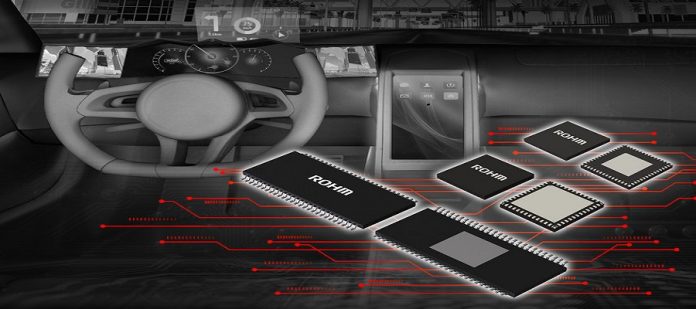The issue isn’t a novel one. In recent times, the push for enhanced car infotainment features has led to a transition toward vehicle displays with higher resolutions. With a growing number of cars incorporating six or even more displays (including the smart rearview mirror, head-up display or HUD, rear seat-mounted screens on the headrest and roof), coupled with the inherent challenge of achieving optimal performance from displays compared to other automotive components, designers are faced with a myriad of complexities.
Both constant current and constant voltage drivers serve as feasible choices for powering LED light sources. Nonetheless, when it comes to meeting illumination needs, such as in the case of LEDs, maintaining a constant current is essential to ensure uniform lighting output. Fluctuations in current can lead to inconsistencies, and it’s crucial to prevent variations in voltage supply, particularly in automotive settings.
Moreover, exterior lighting serves various purposes, necessitating both intense and standard levels of brightness from identical LEDs. Instances of dual-level lighting include brake lights/taillights, low-beam/daytime-running lights, and high-beam/low-beam headlights. In certain scenarios, adept lighting design could effectively manage both scenarios using the appropriate LED driver.
Each of these aspects presents substantial challenges individually. Yet, in the realm of automotive displays, the need to execute all these functions nearly simultaneously adds intricate layers of complexity to the already demanding tasks.
The Need for Advanced LED Drivers
To achieve this level of performance, LED drivers with multi-channel capabilities and sophisticated dimming functions are essential. These advanced features play a crucial role in mitigating undesirable flickering effects. Innovations in LED driver technology have led to the creation of localized dimming functions, which selectively deactivate the backlight in darker regions of the LCD. This enhances display screen performance and contributes to reduced power consumption.
However, a noteworthy design challenge emerges as automotive displays grow in size and incorporate more zones. While conventional direct-type LED drivers can control fewer than 100 zones using a single IC, larger displays with an increased number of zones necessitate a higher count of LED drivers and accompanying components. This presents a substantial hurdle in the design process.
ROHM’s Matrix LED Drivers
In the coming times, LED drivers will need to oversee a greater number of zones compared to conventional ICs. This shift towards more zones offers the potential to streamline the mounting process by employing fewer LED drivers. ROHM introduces the groundbreaking BD94130xxx-M series of matrix LED drivers, seamlessly integrating an 8-line switch controller with a 24-channel current driver. This remarkable combination empowers a single IC to manage the dimming of up to 192 zones of mini-LEDs for backlighting. Additionally, the local dimming function enables individual adjustments for mini-LEDs within each zone, enhancing display quality with improved contrast ratios and reduced power consumption.
Designed for applications such as automotive LCD backlights and expansive displays in next-gen car infotainment systems and instrument clusters, the latest matrix LED driver ICs—namely, BD94130MUF-ME2 and BD94130EFV-ME2—are making their debut. These ICs seamlessly integrate a 24-channel current driver with a switch controller that can be flexibly divided into up to eight lines. Employing register settings, users have the flexibility to select from three distinct patterns (4, 6, or 8) for the number of switch controller lines. This adaptive approach supports various specifications, accommodating differing requirements based on the number of zones and LED current consumption.
Furthermore, an incorporated feedback control function ensures a consistent feedback voltage that remains unaffected by the temperature traits of the LEDs. This not only diminishes the need for extensive thermal design efforts but also reduces the loss ratio.
According to ROHM, these fresh innovations enable operation with only a quarter of the LED drivers required by current (48-zone) offerings, ultimately resulting in an impressive reduction of approximately 84% in the space needed for LED driver mounting. As displays expand in size and the count of zones within next-gen cockpits continues to rise, this advantage is poised to grow even more significant.









